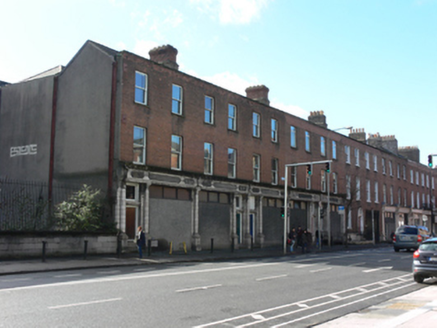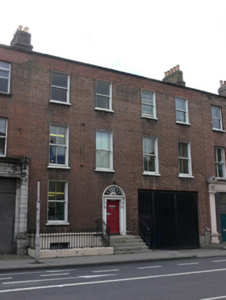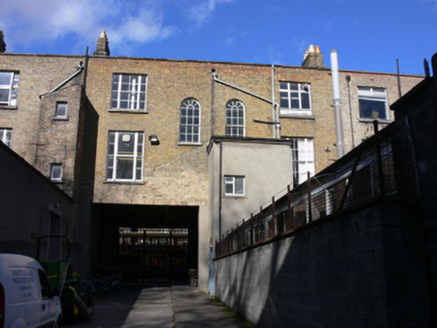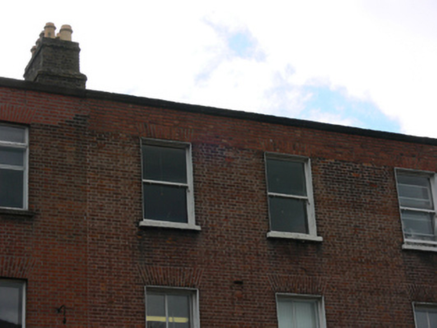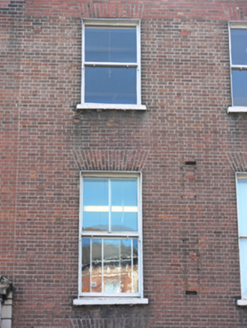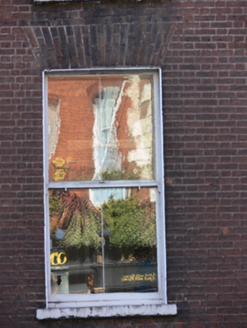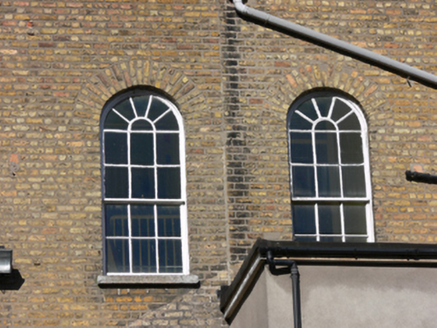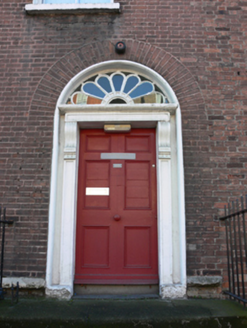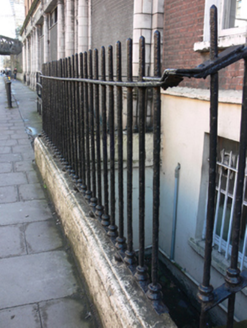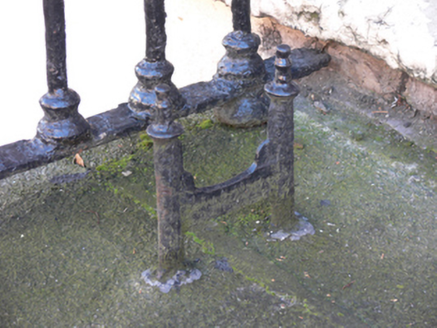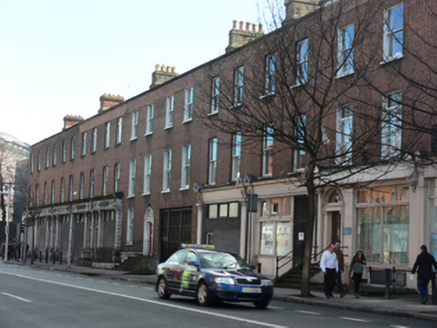Survey Data
Reg No
50020404
Rating
Regional
Categories of Special Interest
Architectural, Artistic, Historical, Social
Original Use
House
In Use As
Office
Date
1820 - 1830
Coordinates
316427, 234108
Date Recorded
11/03/2015
Date Updated
--/--/--
Description
Terraced former pair of two-bay three-storey over basement houses, built 1825, now in single use with recent vehicular access inserted to ground floor and two-storey flat roofed extension to rear (south) elevation. Now in use as part of college. M-profile pitched slate roof, hipped to centre, concealed behind rebuilt red brick parapet with carved granite coping and red brick chimneystacks having clay pots. Red brick, laid in Flemish bond, to walls, with granite plinth course over smooth rendered wall to basement, and yellow brick, partly laid in English garden wall bond to rear. Smooth rendered wall to rear extension. Square-headed window openings with masonry sills, raised render reveals to front, having one-over-one pane timber sliding sash windows, Wyatt windows to rear, round-headed window openings to rear with multiple-over-six pane timber sliding sash windows. Wrought-iron bars to basement window. Recent square-headed carriage arch. Round-headed door opening having moulded masonry surround, render doorcase comprising panelled pilasters, fluted console brackets, entablature, petal fanlight and timber panelled door. Granite steps with cast-iron boot scrape, flanked by wrought-iron railings, with some mild-steel repairs, on carved granite plinth enclosing basement area. Fronting to south of Pearse Street.
Appraisal
Built as a pair by George Hill, they follow the ‘Manders format’, named after the person who designed several houses on the street, with double pile roofs and large rear windows making the most of the south facing elevation. This pair retains notable features, including sash windows, historic iron work, and a well-made doorcase and fanlight. K Byrne (2001) illustrates a very unusual crossed arrow pattern interior fanlight dividing the inner and outer halls. Great Brunswick Street was laid out by the Wide Street Commissioners in 1812 after a long negotiation with Trinity College, whose grounds define the southern side of the street. Construction along the street continued for the next forty years. It was renamed in 1922 to commemorate William and Patrick Pearse, who had been executed for the part they played in the 1916 Rising, and whose family had a business at number 27.
